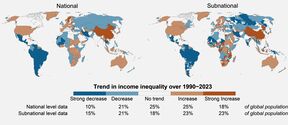Communicating research is about clarifying thinking
Researchers face a growing expectation to engage with society. At the same time, there are more tools than ever to help achieve this goal. Social media has opened up a world of possibilities for communicating about science and research. Yet many hesitate – why should you make the effort?
’A researcher who can communicate their work is sure to gain from it,’ says researcher, communications expert and trainer Petro Poutanen.
’It helps with networking and may result in job offers or speaking engagements. Meanwhile, you’re keeping up to date on the work of other researchers. Communicating your research is also about clarifying your own thoughts – it helps you understand and speak about what you’re doing.’
Poutanen holds a doctoral degree in social sciences and is currently a visiting scholar at the Aalto University School of Business. His past work includes a study of creativity in organisational interaction. He also coaches and trains experts – and researchers especially – in issues related to communications and impact.
’Whether you’re looking to gain visibility in the scientific community, bring decision-makers’ attention to research results or become the media’s trusted expert in your field, you will benefit from developing your communication skills,’ Poutanen says.

Building your expert profile – five tips from Petro Poutanen
- Be available
The first thing you should do is to make sure that there is up-to-date information available online about you, your research and your expertise. Your digital calling card could be your profile in the university’s personnel system, ResearchGate, LinkedIn or a database of experts such as the Kuka platform.
- Start by listening
Find experts, influencers and other interesting people in your field on different channels. Follow discussions around your topics of expertise. By monitoring different channels, you can get a feel for how they operate and discover new ideas for communicating about your research.
Academia.edu and ResearchGate are examples of services oriented toward the academic community. On Twitter, you’ll find scientists, decision-makers and media people. Facebook and LinkedIn are home to numerous discussion groups focused on specific fields and topics. You can also find creative scientific communicators on YouTube and Instagram.
- Consider your message
Being able to present a clear message is as useful on social media as it is when answering a journalist’s interview questions or giving a presentation at a scientific conference. A good story will also appeal to those who make decisions on funding or review scientific publications.
Identify the core of your research, project, article or field of research: what problem are you trying to solve, why is it important and what are its effects? It is also beneficial to identify the limits of your expertise – which issues to comment on and which not to. Everything doesn’t have to be based on your research results, however. As a researcher you’re an expert in your field, which makes your educated views valuable.
- Pick the right channels
Think about who your message is aimed at and where you can best reach them. Social media makes it possible to reach broad audiences, through features like discussion groups or hashtags. With services built for academic communities you can more easily communicate to other experts in your field. Creating your own website or blog will require you to find an audience, whereas blogs featured on websites of research institutions often have an established readership.
- Go for it!
On the internet, researchers have the space to get creative. Knowledge can be showcased in a variety of ways: blog posts, discussions, infographics, photographs, videos or even Wikipedia articles.
Your intended audience should influence your method of expression. Some contexts call for a matter-of-fact approach, whereas blog texts or social media may allow for a more relaxed or humorous voice. People are receptive to stories that appeal to their emotions.
Problems are unavoidable in communication. To avoid misunderstanding, it is important to be aware of what kind of discussion you’re participating in. If it looks like the conversation is being derailed, you shouldn’t feel like you have to debate everyone. In these cases, consider presenting your argument together with a link to a source of background information and leaving the conversation.
Text: Annamari Tolonen, annamari.tolonen@aalto.fi, Photo: Laura Mendelin
See also: professor Emeritus Gustaf Olsson's tips for a good research article
Read more news

From award-winning food packaging to researching biodesign spaces
From an early age, Ena Naito was drawn to both the sciences and design. She found the perfect place to bring those two worlds together.
Architect and designer Talisa Dwiyani combines passion, materials, and collaboration in her work
Indonesia-born Talisa's takeaway from Aalto University is the cross-disciplinary way of working.
Giiguulen Enkhsaikhan: More sustainable textiles with hemicellulose
Aalto University's doctoral researcher's presentation of hemicellulose won the third prize in the Marcus Wallenberg Young Researchers’ Challenge event in November






